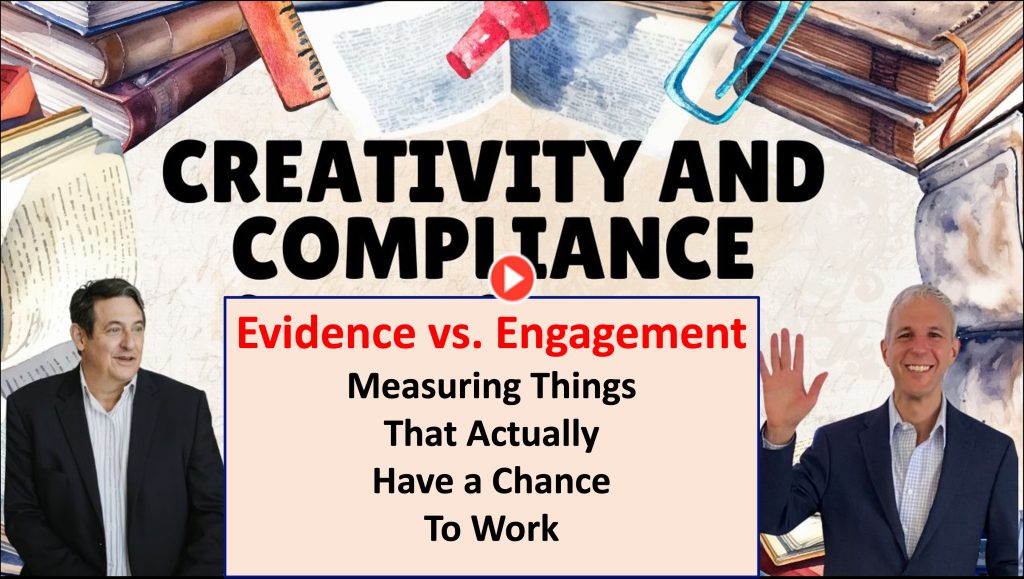Evidence vs. Engagement
Let’s Measure Things That Actually Have A Chance To Work
In this episode of Creativity & Compliance, Tom & Ronnie discuss the tension between common compliance measurement techniques juxtaposed against the most engaging effective training and communication techniques. Are we measuring the wrong things?
“You may have successfully measured their understanding of compliance policies in theory, but you’ve actually increased the likelihood that a problem will occur.”
This is not an argument that measurement is not important. It is. It’s an argument that we should first be focusing on proactively promoting the activities that help educate the workforce and impact behaviors and then measure those things. So let’s discuss what are those things.
- Train Less, Communicate More – People need reminding more than instruction. Short, snackable, trackable learning nudges are more effective the infrequent, longer training. Opt outs aren’t helpful easier. It saves time for them, but you lose your ability to influence behaviors. A major focus of these communications, nudges and microlearnings should be to promote the support system and speak up culture. To create psychological safety, we need to constantly remind people that there are safe ways to report bad behavior and that there is a sense of organizational justice. And if you want to promote things more regularly, infusing some creativity and entertainment into those touchpoints is helpful so you can increase visibility and engagement without message fatigue.
- Measure click-through rates
- Measure change in access to policies
- Measure the amount of touchpoints
- Targeted Training & Microlearning – Training should be targeted to relevant audiences, action oriented, have some entertainment value and regularly reinforced. It’s far more effective to have 4 15-minute microlearnings than a 1-hour annual training. Simple, clear, actionable guidance with sprinkles of fun.
- Measure E-learning – you have your traditional measurement. If it’s fun, your engagement levels should increase.
- Measure Live Learning – this is almost always a better option. In those cases your taking attendance and/or certifying that they went through it.
- Engage & Involve Leaders – If we really want to be effective, we should have specific training for leaders about their additional responsibilities. And then packaging up short commercials for compliance and meetings-in-a-box and having these leaders or Ethics Ambassadors cascade these messages forward. Compliance is everyone’s responsibility so integrating compliance and speak up messaging into the flow of business is a more effective way to mitigate risk. Ensuring that these commercials and microlearnings are simple and fun, makes it more likely that they will be deployed without an eye-roll.
- Measurement is having the leader certify that they deployed the video, game, microlearning, etc.
“Measurement is important. We should focus on proactively promoting the activities that help educate the workforce and that impact behaviors and then measure those things. Engagement first, then evidence.”
Ronnie Feldman is the CEO & Creative Director at Learnings & Entertainments, a learning content provider made up of comedians and entertainers with a focus on corporate risk. www.LearningsEntertainments.com

